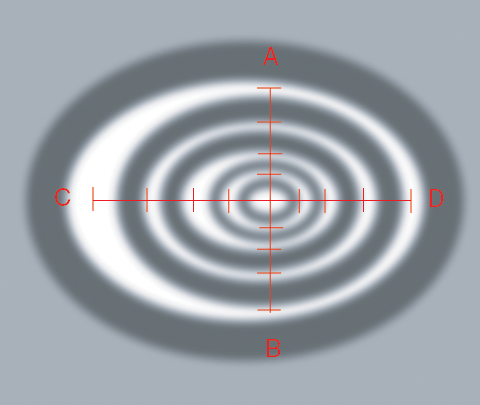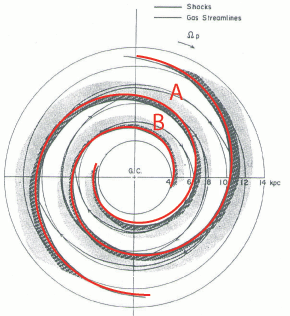Waves
|
Originally
published
4 may 1999 J.E. Martin
http://www.kernow.net/~user/martin IntroductionIn nature the fractional sequence 1/3 2/5 3/7 4/9 etc works in an unusual manner that is- In a radius the distance between A and B is 1/3 of the distance A
to X where X is the centre. Below 1/3 (to the left of the main sequence) the continuation is 1/9 1/7 1/5 1/3 so far I have only found one instance of 1/5 (see planetary waves) and none of the others; although years ago when I did a graph of a graviton by hand, I found 1/9 and 1/7, but I have not been able to repeat that using Excel. This fractional sequence can be found in electrons and in the
magnetic wave structure of large bodies. This leads me to propose that
perhaps there is an underlying wave structure in the structure of the
universe and that within each wave system, the amount of force carrier
on each wave is equal to the amount of force carrier on any other wave. Electron fractional charges (found by experiment )The main sequence of fractional charges found in TFQHE is: 1/3 2/5 3/7 4/9 5/11 etc As reported in Scientific American, Jan 1999 page 9.
Fractional wavelengths of Hale-Bopp comet (observed)
The measurements are within 10% of the predicted figures and less in most cases. Given the poor quality of the photo (taken from an inset in a larger photo) and the violent activity being photographed, I submit this is not to far out to be an acceptable prediction. Planetary fractional wavelengths (observed)
The vast differences in force and time scales plus the addition of satellites leads to planetary wave bands being more erratic than comet wave bands; even so the average error in the above table is less than one tenth of the average error (for all planets) in any other planetary distance formula. The 18% error for planet Earth could be due to the collision that lead to the creation of the Earth/Moon system. There does seem to be some relationship between the size of the error and the mass of satellites. Formation of a solar system begins with a large dust cloud that has a weak gravity field due to a lack of concentrated mass. But an even spread of dust also means an even spread of EM force carrying quantum and therefore the dust cloud has a strong EM wave structure. The dust cloud also has spin, a relic from the creation of the universe. As shown by the comet structure, the wave action divides the dust cloud into rings. Gravitational action with each dust ring collects the dust together in rock like lumps. Movement of the system as it orbits the galactic centre causes acceleration and deceleration of the rocks as they orbit the nucleus and allows the gravitational action to draw the boulders together. As the dust cloud thins out and the planetoids grow bigger, the electromagnetic wave action weakens and eventually looses control of the planets which then have their orbits controlled by gravity. Whether a planet orbits inside or outside its magnetic wave orbit depends on whether the planet was accelerating or decelerating at the time of the changeover from wave to gravity. As the odds are 50/50 the split between inner and outer should also be 50/50 and there are 5 plus and 4 minus in the above table. The BBC broadcast a program on planets in 2002 in which one of the astronomers said that at present no theory of planetary evolution accounts for the existence of the two outermost planets. If that is true then the discovery of a magnetic wave system in the early soar system could point the way to a solution to that problem. The figures for planetary distances are taken from Astrophysical Quantities by C.W.Allan Third edition, page 139.
Galaxy fractional wavelengths (theoretical)
The uniformity of the wave structure cannot be explained by Newton's or Einstein's gravity because neither correctly explains the indirectly observed gravity of galaxies (as calculated from observed stellar orbits). |

